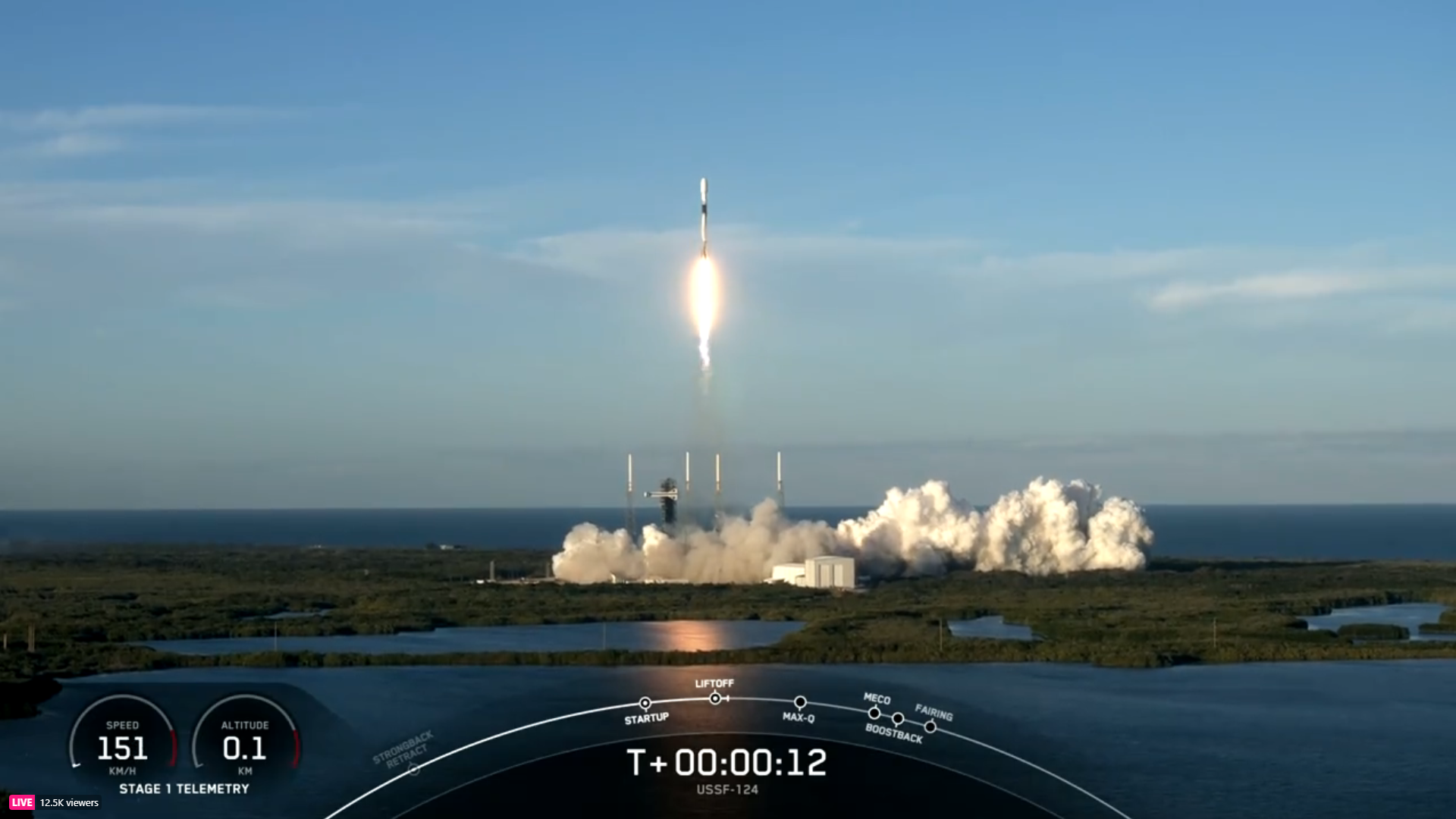
Valentine’s Day, as it should be, was a case of two star-crossed lovers, coasts apart, for SpaceX on Wednesday, as the first of a pair of Falcon 9 boosters targeting launches from opposing seaboards of the United States took flight. First up at 5:30 p.m. EST from storied Space Launch Complex (SLC)-40 at Cape Canaveral Space Force Station, Fla., was the highly classified USSF-124 mission for the U.S. Space Force, with a 23-strong “stack” of Starlink low-orbiting internet communications satellites expected to follow at 5:34 p.m. PST (8:34 p.m. EST) from Space Launch Complex (SLC)-4E at Vandenberg Space Force Base, Calif.
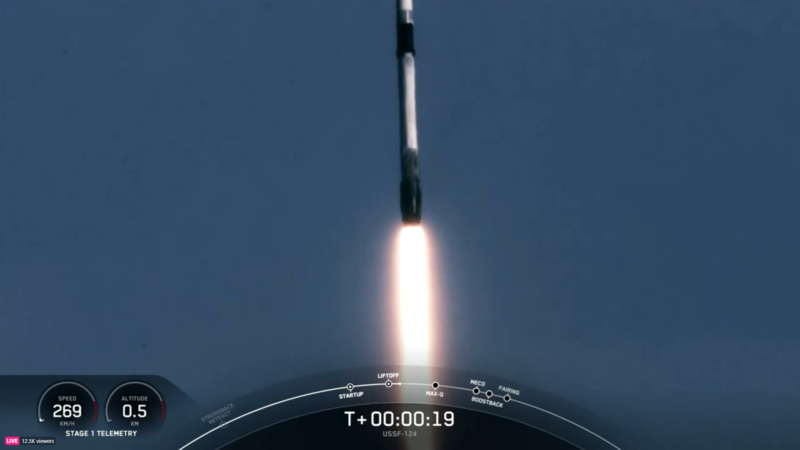
Original plans called for the Starlink mission to fly 120 minutes after USSF-124, as early as 4:30 p.m. PST (7:30 p.m. EST), creating a new empirical record for the shortest interval between pairs of Falcon 9 flights and eclipsing SpaceX’s prior personal best of two hours and 54 minutes set late last December. Having already completed its first ten-launch month in January and its first four-launch month out of Vandenberg, the Hawthorne, Calif.-headquartered organization is also closing in on its barrier-breaking 300th Falcon 9 mission in the early hours of Thursday.
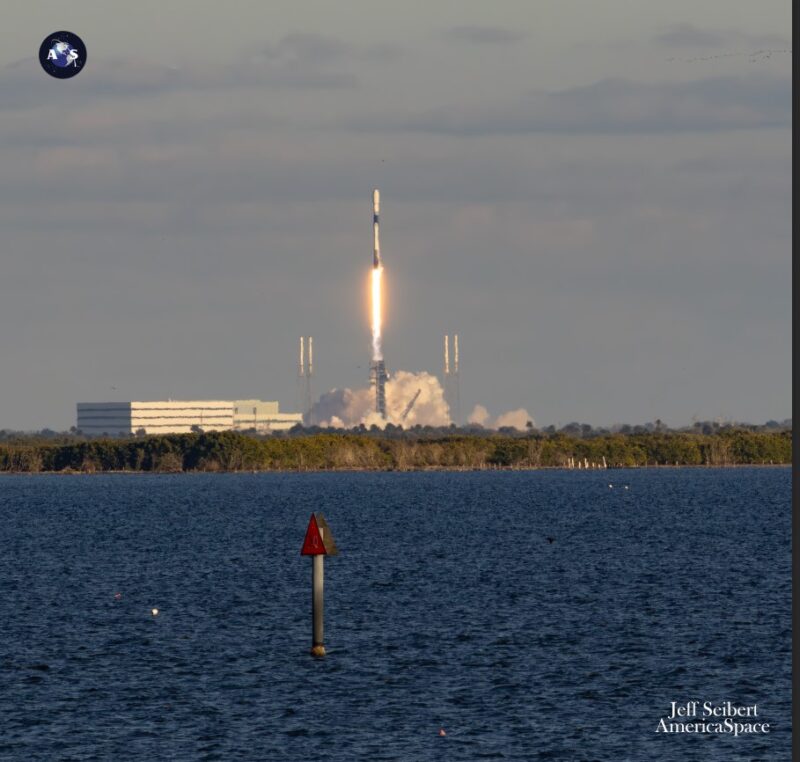
Photo Credit: Jeff Seibert/AmericaSpace
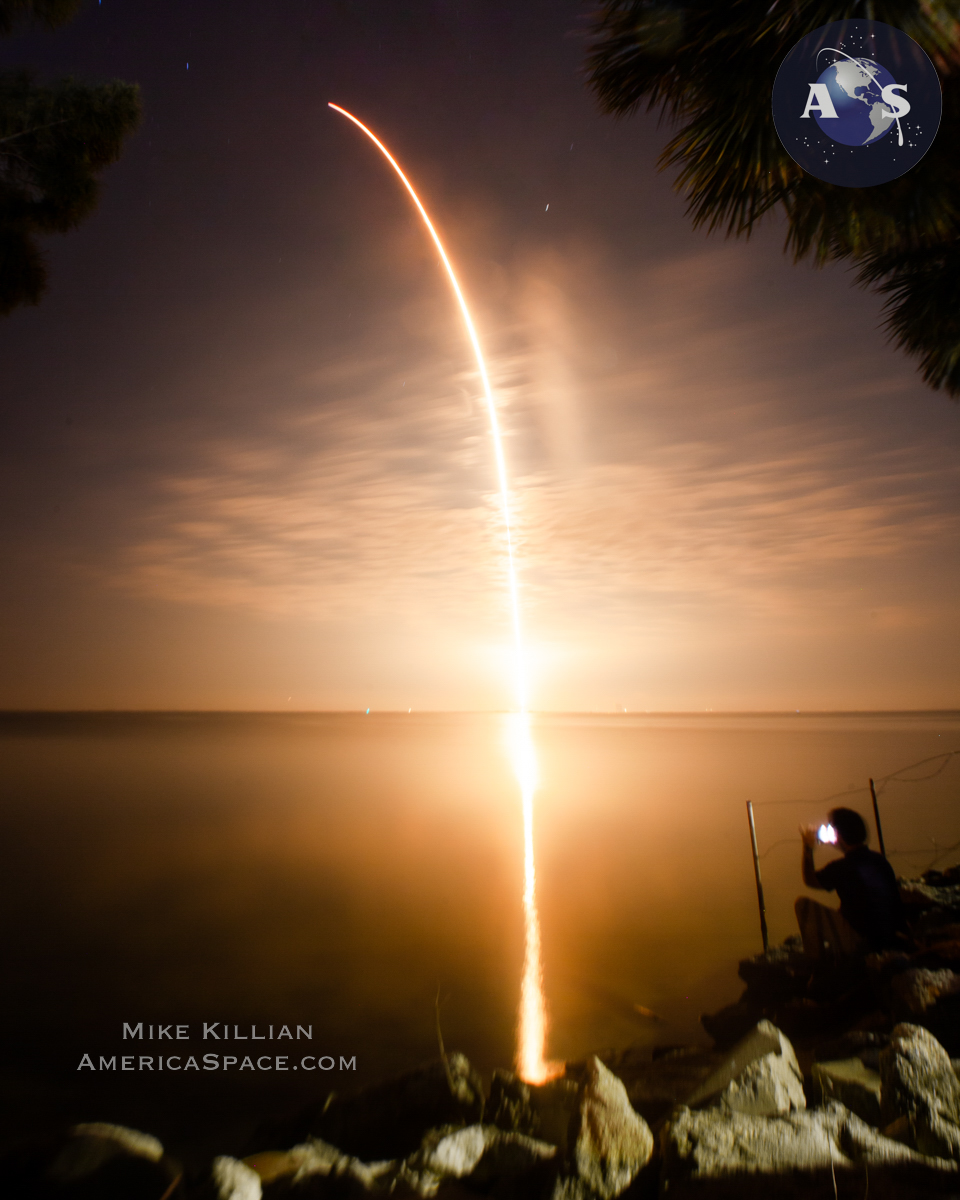
The 230-foot-tall (70-meter) Falcon 9 for the USSF-124 mission—boasting the six-times-used B1078 core stage and a brand-new second stage—was rolled horizontally out to SLC-40 on Wednesday and elevated vertical. Blackened and scorched from her half-dozen previous launches and high-energy re-entries, B1078 sprang onto SpaceX’s scene last March, when she launched Dragon Endeavour and her Crew-6 quartet of NASA astronauts Steve Bowen and Warren “Woody” Hoburg, Russian cosmonaut Andrei Fedyayev and Sultan Al-Neyadi of the United Arab Emirates (UAE) to begin a six-month increment aboard the International Space Station (ISS).
Returning from her maiden voyage, B1078 went on to fly five more times last year, delivering a pair of O3b mPOWER broadband communications satellites into orbit late in April for Luxembourg-headquartered SES and four batches of Starlinks—totaling 89 of these small, flat-packed internet providers—between June and December. Each of her six missions terminated with on-point touchdowns on the expansive deck of the Autonomous Spaceport Drone Ship (ASDS), situated offshore in the Atlantic Ocean.
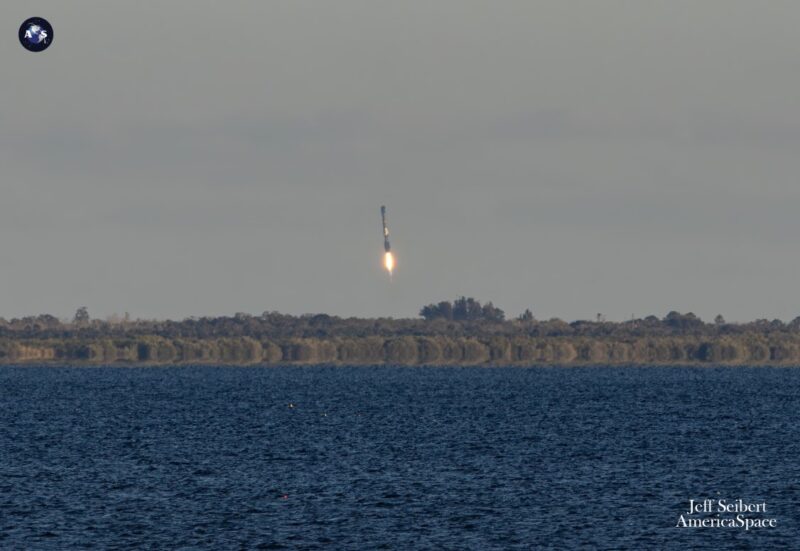
But last night’s seventh launch, by contrast, would see B1078 alight on solid ground for the first time in her career at the Cape’s Landing Zone (LZ)-2. And with her sister, the many-times-flown B1060 booster, slated to launch Intuitive Machines’ IM-1 lunar mission early Thursday from historic Pad 39A at Florida’s Kennedy Space Center (KSC), before returning to neighboring LZ-1, this will mark the first time back-to-back “land” landings will have been executed by two single-stick Falcon 9 boosters, only hours apart.
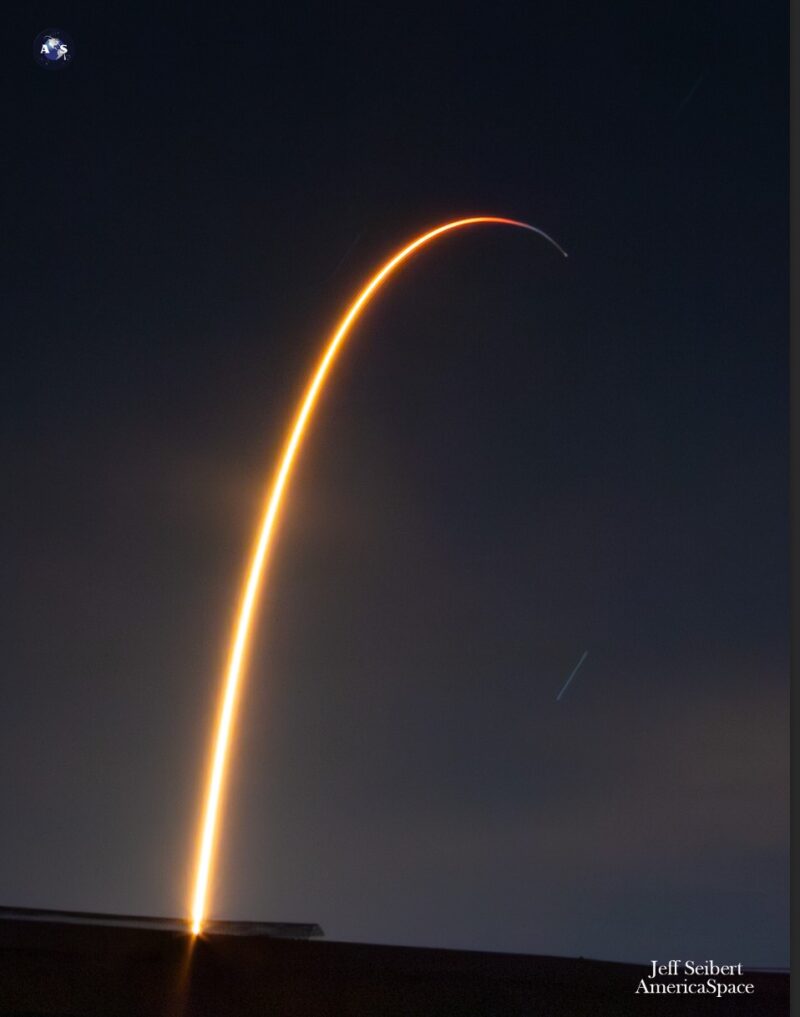
Weather conditions for the USSF-124 launch were predicted to be highly favorable, with a 95-percent Probability of Go (PGo) for Wednesday and around 90 percent on Thursday to support an expansive four-hour “launch window” that opened at 5:30 p.m. EST. “Cool, dry air is filtering into East Central Florida after a cold front pushed through the area overnight,” noted the 45th Weather Squadron at Patrick Space Force Base, citing a slight chance of violating the Thick Cloud Layers Rule.
“An area of high pressure will slide in from the west as the day progresses…shifting low-level winds from the west to the north,” the 45th added. “The high will be centered just to the north of the Spaceport…bringing very favorable weather for the primary launch window.”
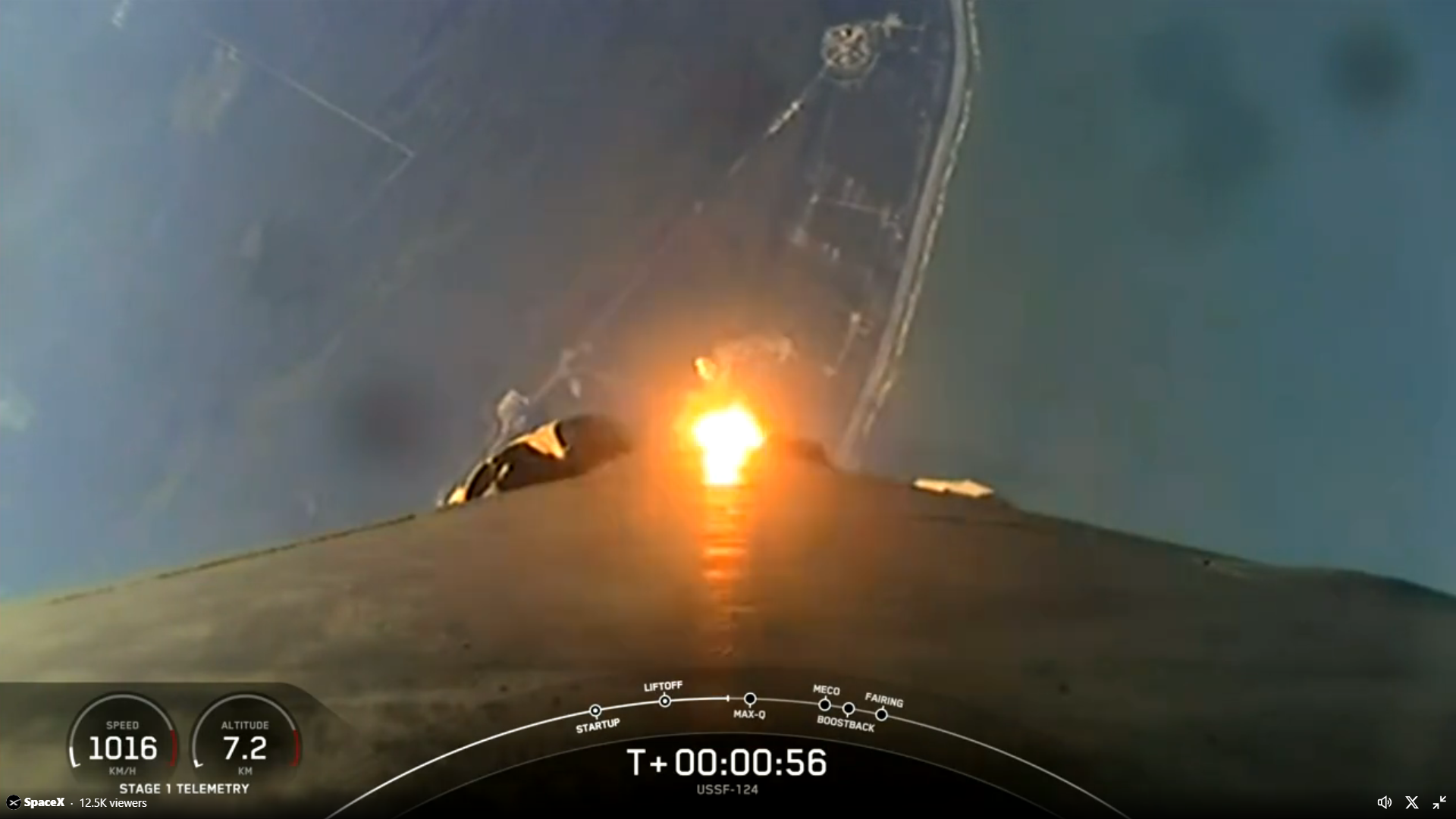
USSF-124 is a National Security Space (NSS) payload flying on behalf of the U.S. Space Force. A launch “task order” for the mission—and two others—was awarded by Space Systems Command (SSC) to SpaceX in May 2022, with USSF-124 identified at the time as “a mission being conducted with SSC partners at [the] Missile Defense Agency”, to be launched “from the Eastern Range into low-Earth orbit”.
More detail on the payload was fleshed out in an SSC news release and other media communications early Wednesday, announcing the satisfactory completion of the Launch Readiness Review (LRR) milestone. It noted that the Falcon 9 “will launch two satellites for the Missile Defense Agency (MDA) and four satellites for the Space Development Agency (SDA) into low-Earth orbit”.
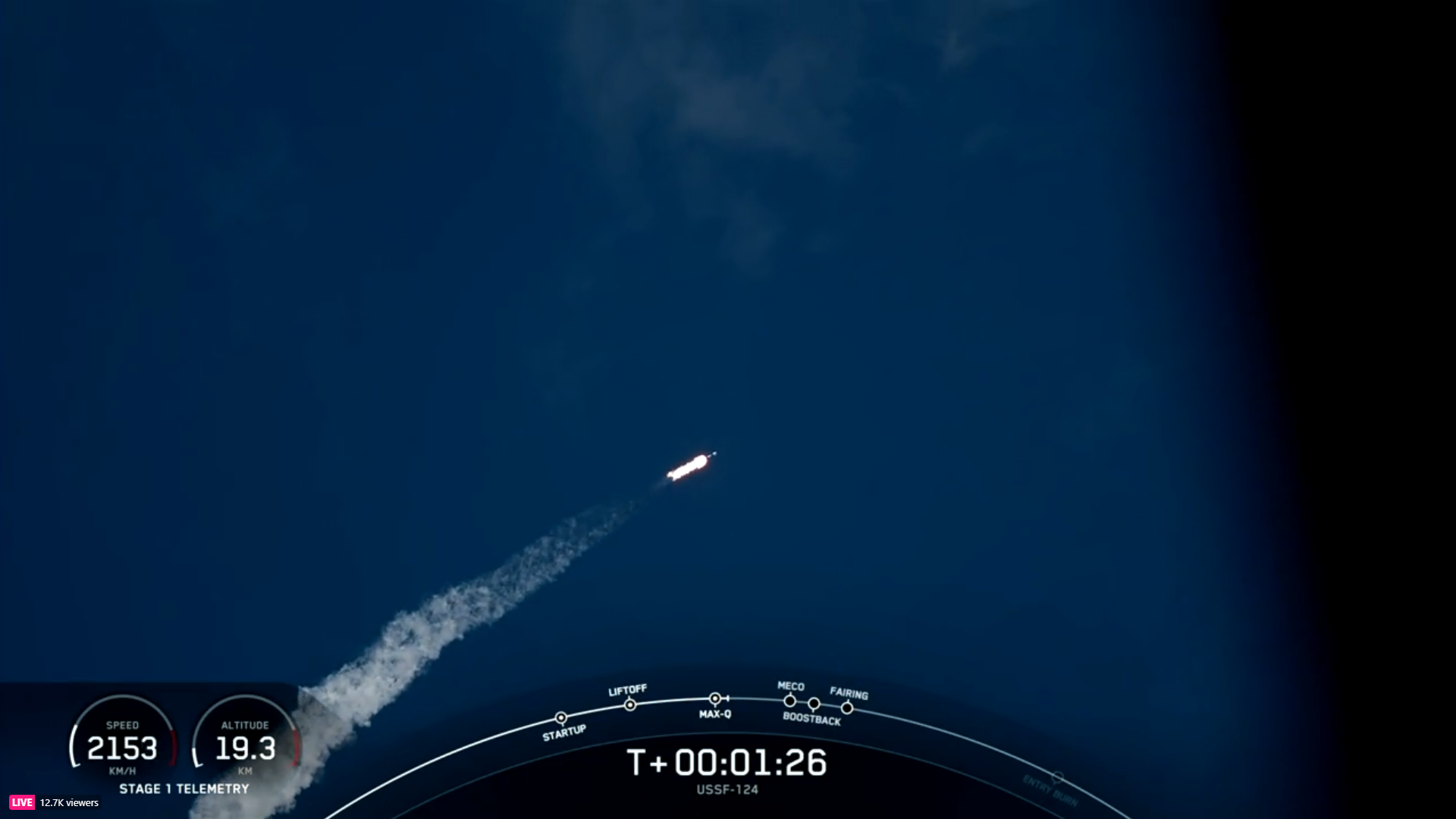
The MDA’s pair of birds are in support of the Hypersonic and Ballistic Tracking Space Sensor (HBTSS) program, which is characterized as a “space sensor prototype demonstration providing fire control quality data required to defeat advanced missile threats” and enables timely engagement by missile defense systems. “This birth-to-death tracking by HBTSS,” the MDA explained, “will make it possible to maintain custody of missile threats from launch through intercept, regardless of location.”
Also aboard were the SDA’s final four Tranche 0 Transport and Tracking Layer (TTL) satellites for its Proliferated Warfighter Space Architecture (PWSA), bringing to 27 the total strength of this constellation over three Falcon 9 launches since April of last year. According to SDA Director Derek Tournear, launching both sets of satellites together will enable both agencies to “look at test targets from the same orbit at the same time, so that we can see how the two sensors work together”.
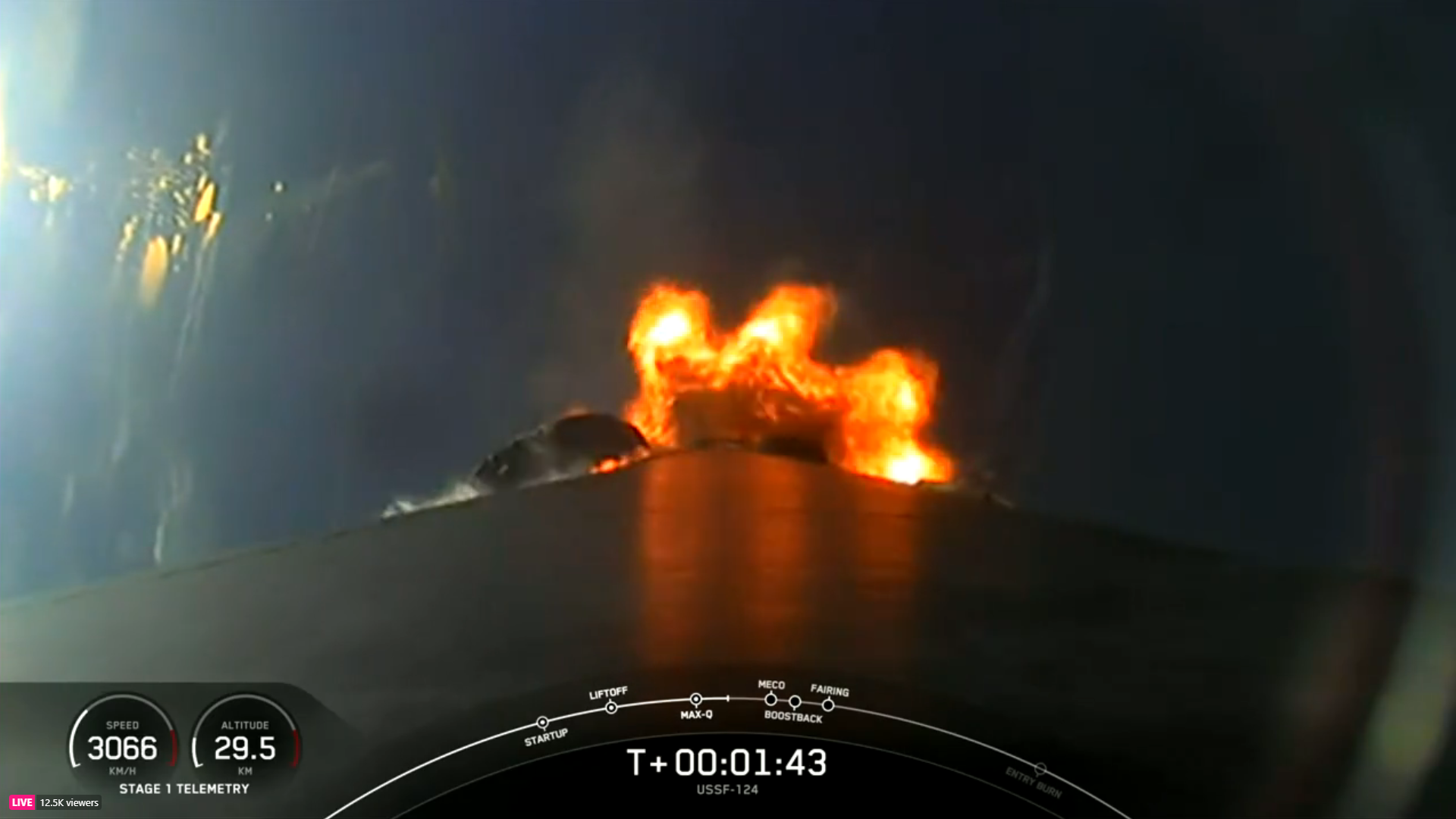
“We’re thrilled to have our team assembled here on the Space Coast,” said Col. Jim Horne, senior materiel leader for SSC’s Launch Execution Delta. “With each national security launch, we continue to strengthen America’s capabilities and its deterrence in the face of growing threats while adding stability to a very dynamic world.”
Under what SpaceX described as “lovely” Florida skies, B1078 went airborne precisely on the opening of Wednesday’s launch window at 5:30 p.m. EST, trailing a spectacular exhaust plume throughout first-stage ascent. Two and a half minutes into flight, the core stage separated and pirouetted to a beautiful landing on LZ-2, at which time—per the customer’s request—the live feed ended.
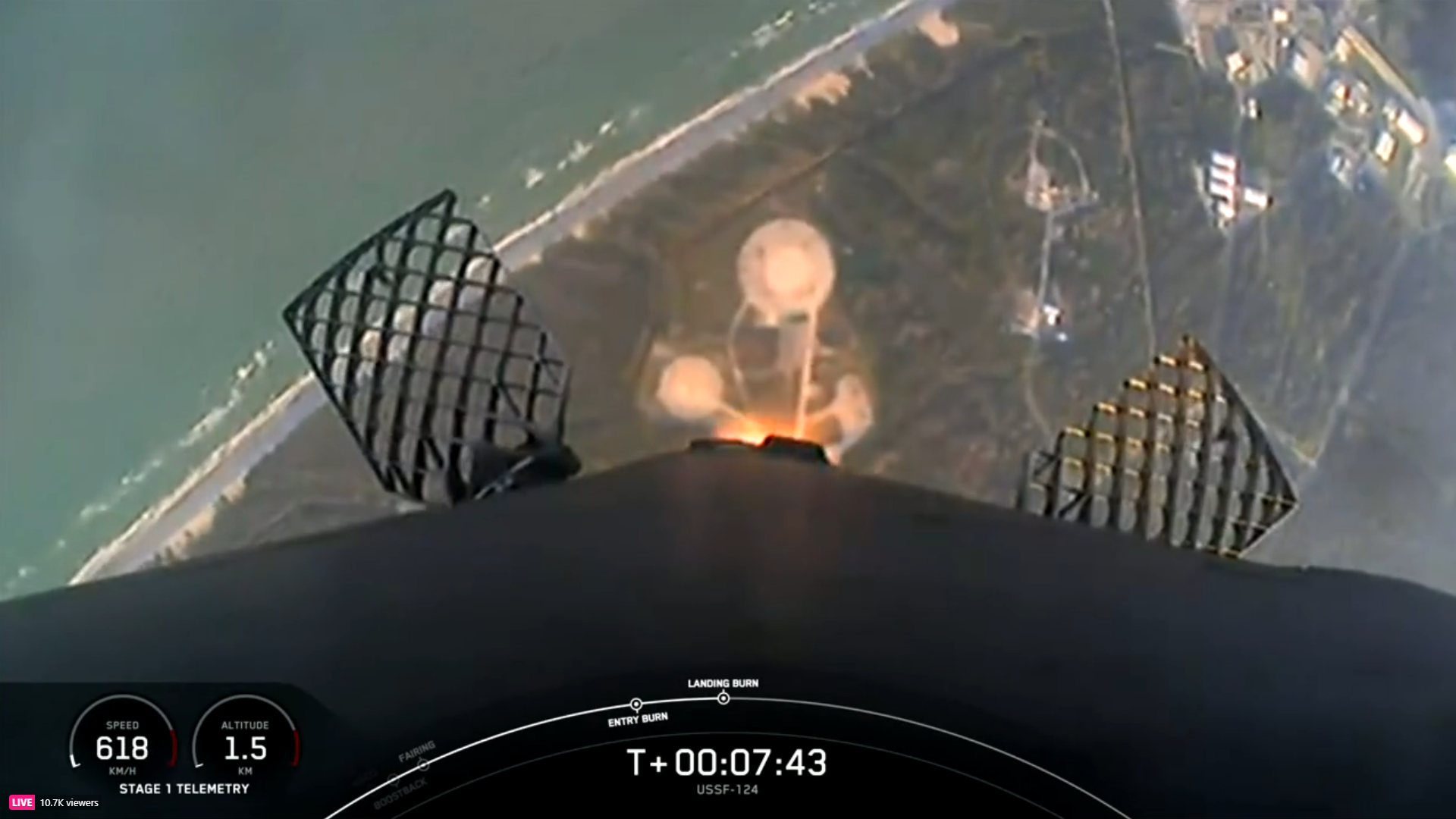
Attention then shifted to the West Coast, where the newest “Vandenberg Falcon” was awaiting her second launch from SLC-4E with 22 Starlink satellites, totaling 38,800 pounds (17,600 kilograms). The B1082 booster came online on 3 January for the first Falcon 9 mission of 2024, delivering 21 Starlink satellites to orbit and returning to a landing on the ASDS, “Of Course I Still Love You”, out in the Pacific Ocean.
Turned around briskly in less than 43 days, it was initially hoped that B1082 might fly as soon as 4:30 p.m. PST (7:30 p.m. EST) to achieve a two-hour launch-to-launch record. But as the afternoon turned to evening, SpaceX announced that launch was being retargeted later in the window for 5:34 p.m. PST (8:34 p.m. EST), only 20 minutes before the closure of Wednesday’s raft of T-0 opportunities.
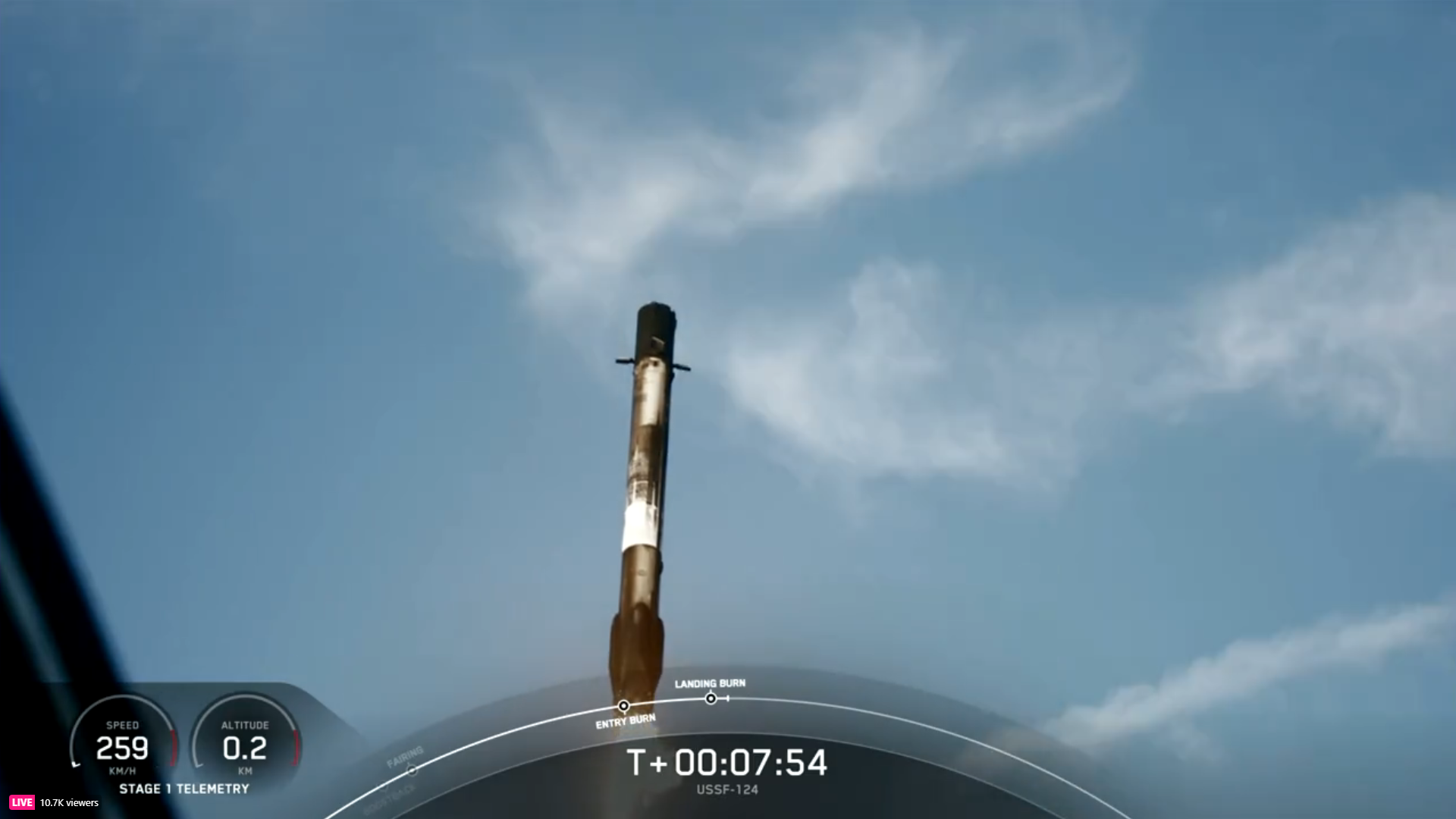
If the Starlink launch goes ahead, SpaceX will achieve two flights only three hours apart, comfortably setting them in second place for the shortest interval between pairs of Falcon 9 missions. And rescheduled for 1:05 a.m. EST Thursday, a 17-times-flown “grizzled veteran” of the fleet B1060 is ready to loft Intuitive Machines’ IM-1 lunar mission on a multi-day trek to alight a lander at the South Pole of the Moon.
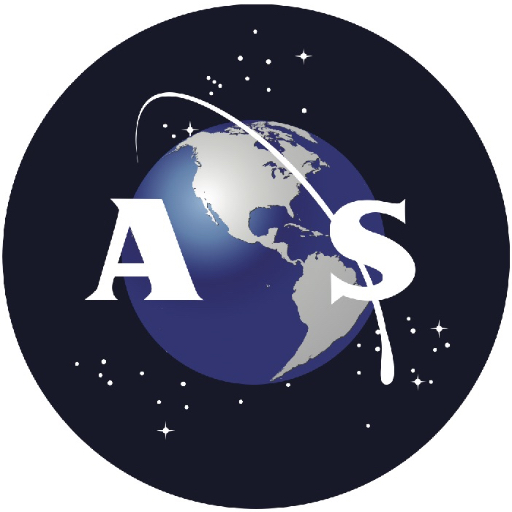
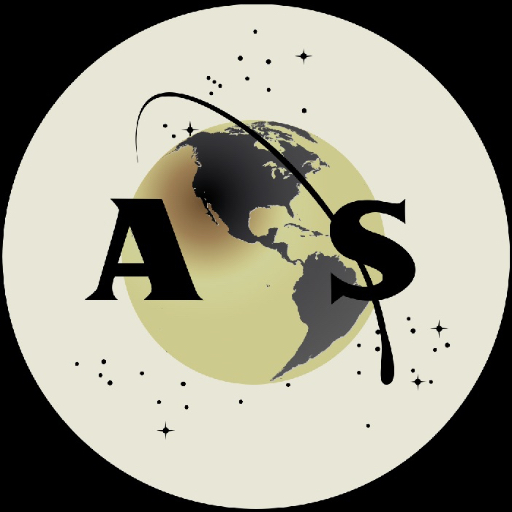
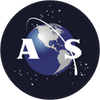

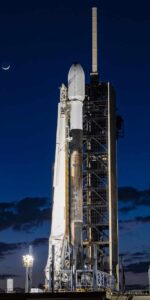
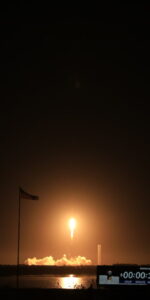
5 Comments
Leave a Reply5 Pings & Trackbacks
Pingback:SpaceX Launches IM-1, Nova-C Lander Powers Up, Communicates, Begins Multi-Day Voyage to Moon - AmericaSpace
Pingback:SpaceX “Leaps”, Launches and Lands Falcon 9, Delivers 23 Starlinks to Orbit - AmericaSpace
Pingback:SpaceX Launches Tenth Falcon 9 of March, ULA Looks Ahead to Final Delta Mission - AmericaSpace
Pingback:SpaceX Launches Next-Generation Environmental Monitoring Satellite to Orbit - AmericaSpace
Pingback:SpaceX Launches Next-Generation Environmental Monitoring Satellite to Orbit - SPACERFIT